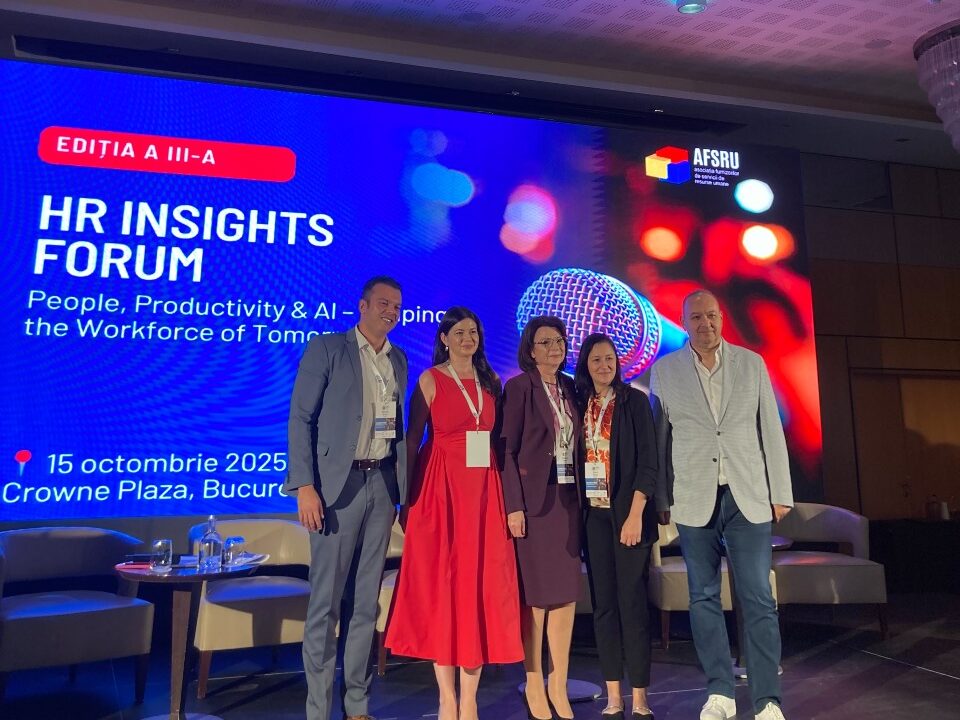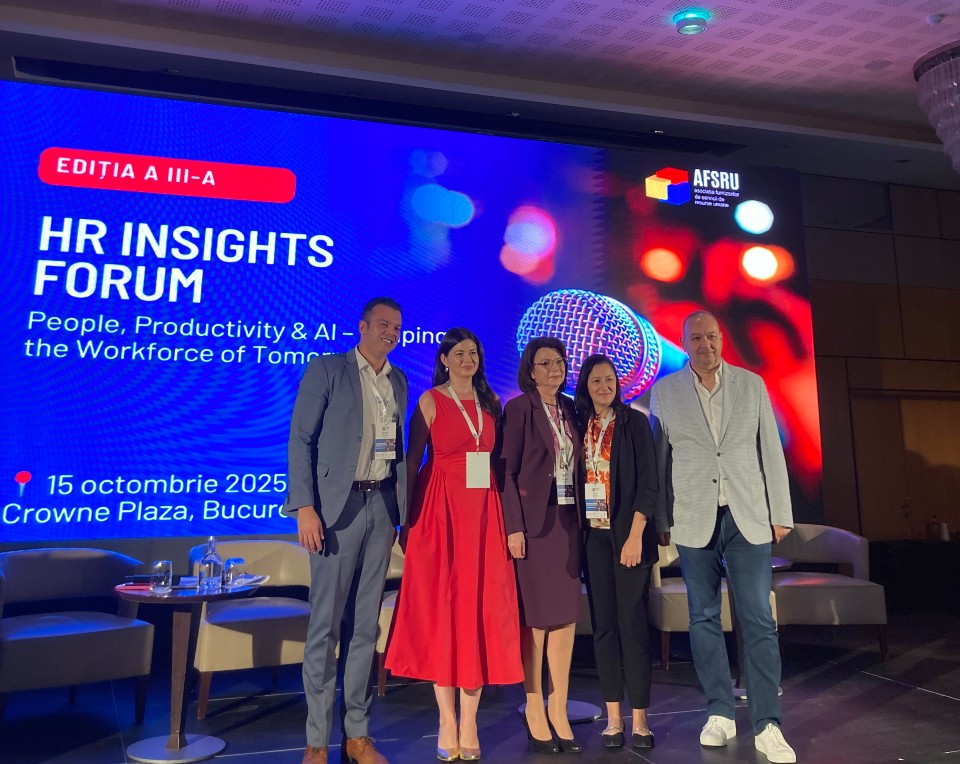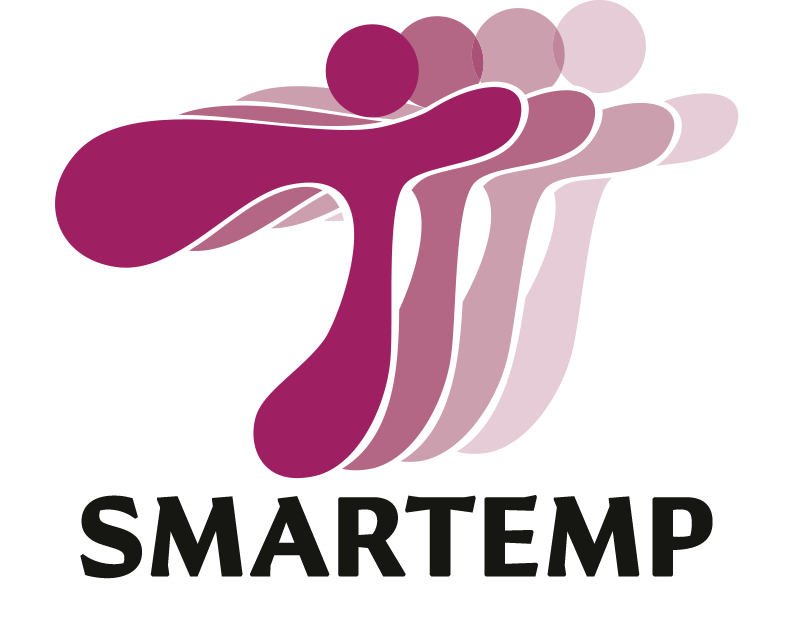2025 is shaping up to be a year of business caution. You may have already reduced the number of jobs or cut personnel expenses, and your main challenge now is figuring out how to achieve more with less in the current climate. You’re probably asking yourself: how can I maintain the optimal number of employees when business activity grows—without creating long-term costs?
Start by gathering insights and learning from other employers who are in the same position. Discover their solutions at the HR Insights Forum 2025!
Cel mai recent raport HR Insights, realizat de Asociatia Furnizorilor de Servicii de Resurse Umane (AFSRU) arata ca prioritatile in business pentru top si middle manageri, dar si pentru specialisti sunt: adaptarea la noile conditii ale mediului economic (58%), digitalizarea proceselor/implementarii AI (53%) si viteza de adaptare la nevoile de schimbare ale clienților (50%).
What are the biggest challenges businesses face? Employee engagement and motivation (63%), retention (54%), and talent acquisition (54%). How are companies addressing their need for temporary staff? 39% use internal resources, 31% rely on internal referrals, and only 24% work with a temporary staffing agency in 2025, according to the HR Insights report.
In this context, where employers are searching for ways to adapt to the economic environment while keeping teams motivated, key questions arise:
- What solutions can help you optimize business costs?
- How can you keep people motivated when budgets shrink?
- What does Generation Z expect from their future employers?
- And what should HR’s role be in this new reality?
These are some of the questions Mariana Vaida, CEO of Smartemp, answered in an interview ahead of the HR Insights Forum.

How can companies reduce costs without letting people go?
When I speak with production or retail managers, the first thing they often tell me is: “We can’t cut costs anymore without affecting our people.” This reflects the pressure many businesses are under—but the truth is, there are solutions. They require flexibility, not austerity.
We’re seeing growing pressure on budgets, especially in industries with thin margins—such as retail, logistics, manufacturing, agriculture, and HoReCa. In this context, companies must find ways to reduce costs without hurting team performance or morale.
One of the most effective strategies is outsourcing administrative processes, like payroll and personnel administration. By externalizing these activities, organizations can achieve real savings and focus internal resources on strategic initiatives.
The PwC “Workforce Expectations and Challenges Romania 2024” report shows that digitalization and outsourcing HR administration can reduce recurring costs by 20–25%. This isn’t just theory—we’ve seen clients significantly cut administrative expenses and speed up new-hire integration. Managers felt the difference immediately: less bureaucracy and more focus on customers.
Similarly, digitalizing repetitive HR processes—such as time tracking, electronic signatures, or onboarding platforms—saves time and reduces errors. The McKinsey HR Monitor 2025 report found that companies that digitalize HR workflows cut unproductive time by up to 30% and enhance employee experience.
To optimize recruitment and personnel management costs, Smartemp launched Smartemp FlexWork – a complete solution that covers all stages of temporary employment. We provide support for both employers and employees. We start by publishing and promoting the job post, screening CVs, and conducting interviews. Then we present employers with the most suitable candidates.
Once candidates are selected, we handle all administrative aspects: drafting and managing employment contracts, providing legal advice, assisting with contract extensions or permanent employment transitions. We also support onboarding, ensuring new employees integrate smoothly. Each person receives information about company policies and procedures, access to a dedicated HR line, and continuous monitoring from our Smartemp team throughout the collaboration.
In addition to these included services, FlexWork offers extra benefits to employers: a free digital guide on managing temporary employment legally, a 10% discount on administrative costs for long-term contracts (minimum 10 employees), and a “Try & Hire” option that allows a temporary collaboration to become a permanent one. Upon request, we can also provide feedback reports or operational training for temporary staff.
However, cost optimization is not only about HR management. More and more companies are discovering that partnerships—with other firms, employees, suppliers, or customers—can become powerful sources of efficiency and growth.
A recent example: a coffee shop chain partnered with a travel company to offer themed vacation experiences directly in cafés. This model expands the business, reduces marketing costs, and strengthens customer loyalty. That’s the essence of the new economy: partnership as a tool for efficiency.
Another solution is workforce flexibility. Instead of layoffs, companies can adopt flexible models—temporary work, part-time, or freelancing—which allow cost adjustments based on activity levels. In seasonal industries, these solutions are balancing tools, not compromises.
Optimizing costs doesn’t mean cutting—it means allocating resources intelligently. Investing in people, technology, and partnerships drives long-term efficiency and stability.
Is employee development the smart investment that turns cost optimization into business growth?
Companies that reinvest savings into internal training, digital upskilling, or well-being programs achieve not only financial stability but also sustainable performance. Budget pressure is intense right now, but success no longer comes from cost-cutting. It comes from learning, collaboration, technology integration, and the ability to build strong partnerships—between companies, employers and employees, brands and clients.
How can companies develop internal talent and integrate new graduates?
Many employers say, “We can’t find people, but we can’t keep raising salaries either.” I tell them there are two clear directions.
First, invest in the people you already have. Studies show that 87% of employees are willing to adapt and want to learn new things. Internal development reduces recruitment costs and improves retention because people stay where they see a clear career path. We’ve seen this in action—warehouse employees trained for supervisory roles reduced costs and increased loyalty.
Practical approaches like cross-training and internal rotation programs allow employees to learn multiple roles within the company, filling temporary needs without external hires. Internal mentoring also works naturally: senior staff train new colleagues, transferring know-how. It’s a low-cost, high-impact solution that accelerates integration and fosters a stronger culture.
Digital learning, through short, modular courses integrated into daily work, is another efficient method—low cost, big impact on skills and motivation.
The second direction is integrating young graduates. Many employers fear they lack experience, but they often forget that young people bring enthusiasm and lower salary expectations. If we train them from the beginning in our culture, we have a real chance to retain them long-term.
Structured internship programs with clear outcomes are essential. It’s not enough to just bring in interns—you need a training plan, a mentor, and a post-program development path. On average, companies applying this approach achieve retention rates above 60%.
Partnerships with universities and technical schools are equally valuable—they build a long-term talent pipeline. In some cases, it’s worth investing in scholarships, equipment, or teacher mentoring. “Train & Hire” programs work simply: companies fund short 1–3 month training programs and then hire the trained young people. It’s a small investment with big retention results.
Generation Z learns quickly but needs flexibility. That’s why combining digital microlearning with hands-on sessions or shadowing accelerates adaptation and reduces onboarding time by 30–40%.
Creating a feedback and mentoring culture is essential. Young people value regular feedback even more than their starting salary. Monthly feedback sessions and access to a mentor increase engagement and loyalty. Additionally, offering meaningful benefits—access to online courses, transportation passes, volunteer programs, or flexible schedules—matters deeply when they choose a job.
What does Generation Z expect from their future jobs?
Young people seek purpose and balance, not just pay. They want jobs that align with their values and allow work-life balance. They’re big fans of hybrid work, preferring 1–2 remote days per week, and they value autonomy in managing their time.
They expect tangible benefits—internships, scholarships, transportation reimbursement, flexible hours—and they negotiate terms from the start rather than accepting predefined conditions.
They also want real development opportunities—internships, training programs, and continuous learning. They thrive on skill transfer across fields—communication, critical thinking, and digital literacy. Authenticity and transparency from employers matter, and direct, natural communication—without excessive formality—is key to keeping them engaged.
Companies can reduce costs without letting people go — the key is flexibility, not austerity. Outsourcing and digitalizing processes create real savings and allow greater focus on performance.
How can HR redesign processes to optimize costs and meet expectations?
HR is no longer just a support department—it’s a strategic business partner. Its role is to redesign processes, eliminate redundancies, and bring digitalization where it matters most: in recruitment, evaluation, and payroll. Whether internal or outsourced, HR’s impact is measurable.
Priorities include automating repetitive tasks, using AI in recruitment and hiring to shorten selection time and reduce cost per hire, and implementing digital onboarding and self-service tools that let employees manage leave, personal data, and documents without endless email chains.
HR also plays a key role in organizational culture, bringing empathy to teams and adapting benefits to real employee needs. While benefit budgets increased by 17% in 2024, true value comes when HR listens, collects feedback, and creates flexible, personalized benefit packages. Cross-training and internal mentoring remain essential, helping people learn from one another and reducing dependency on external hiring.
For companies like BIA Human Capital Solutions and Smartemp, HR acts as a partner in efficiency and flexibility, managing the full administrative cycle—recruitment, contracts, payroll, onboarding—so clients can focus on their core business. At the same time, HR provides strategic consulting, ensures legal compliance, drives digital transformation through software and automation, and strengthens retention through training and continuous feedback.
In short, HR is no longer just administrative—it’s an extension of the client’s team, bringing predictability, efficiency, strategy, and empathy.
What do you gain by working with SMARTEMP?
✔️ Full HR services: recruitment, payroll, personnel administration
✔️ Avoid the need to invest in internal HR teams
✔️ Enjoy flexibility in adjusting your workforce
✔️ Gain budget predictability with zero hidden costs
✔️ Stay legally worry-free – SMARTEMP handles all compliance matters
✔️ Focus on your business, not on bureaucracy
📧 Request your personalized offer at office@smartemp.ro or call 0738 662 370
Sources:
- HR Insights Report by the Association of Human Resources Services Providers (AFSRU), prepared for the HR Insights Forum. Conducted between August–October 2025 on 155 private-sector companies that use or could use temporary work (45% Top Management, 27% Middle Management, 28% Specialists; 61.5% from companies with over 100 employees).
- PwC “Workforce Expectations and Challenges Romania 2024” Report
- McKinsey HR Monitor 2025 Study
Read also:
Why is it important to build partnerships in business to overcome challenging times?
How to Recruit Skilled Workers in 2025: Strategies That Really Work



